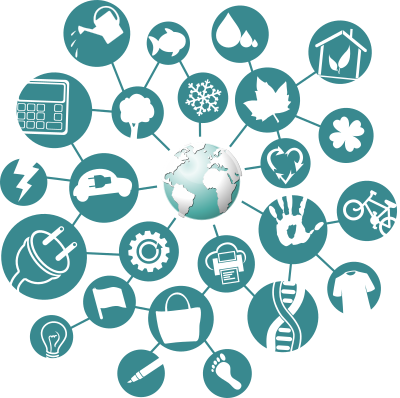Welcome to our Internet of Things (IoT) guide! In this tutorial, we’ll explore the exciting world of IoT, breaking down its key concepts, real-world applications, and benefits. Join us as we uncover how IoT is transforming the way we connect and interact in today’s digital world.
Contents [hide]
Introduction to the Internet of Things (IoT)
The Internet of Things is a vast network of interconnected devices and objects that can communicate and share data with each other seamlessly. It is in short known as IoT. These objects can range from everyday devices like smartphones, wearables, and home appliances to complex industrial machinery, smart city infrastructure, and even autonomous vehicles.
The IoT ecosystem enables these devices to collect, exchange, and analyze data, leading to enhanced efficiency, automation, and informed decision-making. Continue reading this Internet of Things (IoT) tutorial to learn more.
You can learn the basics of IoT using the following links:
- Let’s see an introduction to IoT and learn what is Internet of Things (IoT).
- Learn about characteristics of IoT with examples
- Learn about IoT enabling technologies
Understanding the Components of IoT
To grasp the functioning of IoT, it is essential to understand its key components:
Sensors and Actuators
Sensors are devices that detect and measure physical parameters such as temperature, humidity, light, motion, and pressure. Actuators, on the other hand, are devices that can control physical actions based on the data received from sensors. These components form the sensory system of IoT, enabling devices to perceive and interact with their environment.
- To learn more about the physical objects, see this article on physical design of IoT.
- To learn more about the logical components and concepts, see this article on logical design of IoT.
- To learn about the basic architecture and various layers in IoT, see this article on IoT architecture layers.
- To learn how to design an IoT application, see this article on IoT design methodology with each step explained in detail.
Connectivity Technologies
Connectivity technologies play a crucial role in IoT as they enable devices to communicate with each other and with the internet. Common IoT connectivity options include Wi-Fi, Bluetooth, Zigbee, NFC (Near Field Communication), and cellular networks. The choice of connectivity technology depends on factors such as range, power consumption, and data transfer rate.
To learn more on wireless communication technologies used in IoT, see this article on wireless protocols for IoT.
Cloud Infrastructure
Cloud infrastructure provides the storage, computing power, and data processing capabilities required by IoT devices. It allows for the efficient management and analysis of the massive amounts of data generated by IoT devices. Cloud platforms like Amazon Web Services (AWS), Microsoft Azure, and Google Cloud Platform (GCP) offer IoT-specific services to facilitate device management and data analysis.
- To learn more on different IoT platforms, see these articles on IoT platforms, AWS cloud, and ThingSpeak.
- To learn about the use of Python and Django in IoT, see this article on Python and Django in IoT.
- To learn more on the role of BigData and associated technologies in IoT, see these articles on BigData and Data Analytics in IoT, Apache Hadoop, and Apache Spark.
IoT Applications in Various Industries
The applications of IoT are vast and span across different industries. Let’s explore a few prominent examples:
Smart Home Automation
Smart home automation systems leverage IoT to enable control and automation of various home appliances and devices. Users can remotely monitor and control lighting, temperature, security systems, and even kitchen appliances through smartphone apps or voice assistants. This technology offers convenience, energy efficiency, and enhanced security to homeowners.
Healthcare
IoT has revolutionized healthcare by enabling remote patient monitoring, smart medical devices, and real-time health tracking. Wearable devices equipped with sensors can monitor vital signs, remind patients to take medication, and alert healthcare providers in case of emergencies. IoT in healthcare improves patient outcomes, reduces costs, and enhances overall healthcare delivery.
Agriculture
In agriculture, IoT enables precision farming by collecting data on soil moisture, temperature, and crop health. This data helps farmers optimize irrigation, manage pests, and enhance crop yield. Smart farming techniques based on IoT empower farmers with real-time insights, reducing resource wastage and increasing productivity.
Transportation
IoT is transforming transportation systems with features like smart traffic management, connected vehicles, and fleet tracking. Intelligent transportation systems based on IoT improve road safety, optimize traffic flow, and enable efficient logistics management. Connected vehicles equipped with IoT sensors can provide real-time updates on vehicle performance and maintenance requirements.
Manufacturing
IoT plays a pivotal role in Industry 4.0 by enabling smart factories and intelligent supply chains. Connected sensors and devices collect data from manufacturing equipment, allowing real-time monitoring, predictive maintenance, and quality control. IoT-driven automation streamlines manufacturing processes, reduces downtime, and enhances overall productivity. Continue reading this Internet of Things (IoT) tutorial to learn more about IoT.
To learn in-depth about different application of IoT, see this article on domain specific applications of IoT.
IoT Protocols and Standards
To enable seamless communication between IoT devices, various protocols and standards have been developed. Some commonly used ones include:
MQTT
MQTT (Message Queuing Telemetry Transport) is a lightweight publish-subscribe messaging protocol designed for IoT applications. It provides efficient and reliable message exchange between devices in low-bandwidth and unreliable network environments.
CoAP
CoAP (Constrained Application Protocol) is a specialized protocol designed for resource-constrained IoT devices. It enables efficient communication over constrained networks, making it suitable for applications with limited power and processing capabilities.
Zigbee
Zigbee is a wireless communication standard widely used in home automation and industrial control systems. It operates on low power and supports mesh networking, allowing devices to form self-organizing networks.
Bluetooth
Bluetooth is a short-range wireless technology commonly used in consumer IoT devices. It facilitates communication between devices in close proximity, such as smartphones, wearables, and smart home devices.
To learn the role of other protocols in IoT, see these articles on TCP, UDP, HTTP, XMPP, BGP, and EIGRP.
Security and Privacy Concerns in IoT
As IoT continues to grow, ensuring the security and privacy of connected devices becomes paramount. Some key considerations include:
Authentication and Authorization
Proper authentication mechanisms are essential to ensure that only authorized devices can access and communicate with each other. Strong authentication protocols and secure access control mechanisms should be implemented to prevent unauthorized access and data breaches.
Data Encryption
IoT devices often collect and transmit sensitive data. Implementing strong encryption techniques ensures that the data remains secure during transmission and storage. Encryption prevents unauthorized parties from intercepting and tampering with the data.
Secure Firmware Updates
Regular firmware updates are crucial to address security vulnerabilities in IoT devices. Secure update mechanisms should be implemented to prevent unauthorized modifications to device firmware, ensuring that devices are protected against emerging threats.
Frequently Asked Questions (FAQs)
Can you provide some examples of popular IoT devices?
Some popular IoT devices include smart thermostats, fitness trackers, smart locks, connected security cameras, and voice-controlled assistants like Amazon Echo or Google Home.
How does IoT impact data privacy?
IoT raises concerns about data privacy due to the vast amount of personal and sensitive data collected by connected devices. It is crucial to implement strong security measures, including data encryption and user consent mechanisms, to protect individuals’ privacy.
Is IoT only limited to residential and industrial applications?
No, IoT has applications in various domains, including healthcare, agriculture, transportation, and retail. Its potential is not limited to specific sectors but can be leveraged across industries to enhance efficiency and improve outcomes.
What are some challenges in implementing IoT projects?
Challenges in implementing IoT projects include interoperability issues, data security concerns, scalability, and the complexity of integrating various hardware and software components.
How can I learn more about IoT?
To deepen your knowledge of IoT, you can explore online courses, tutorials, and forums dedicated to IoT development. Experimenting with small-scale projects and joining IoT communities can also help you gain practical experience and learn from others in the field.
In this comprehensive guide / Internet of Things (IoT) tutorial, we have covered the fundamentals of IoT, its applications, protocols, security concerns, and provided insights into building your first IoT project. Embrace the opportunities presented by IoT and unleash your creativity to contribute to this transformative technology.
Other articles related to IoT;
- 8051 Microcontroller
- AT89S8253 Microcontroller
- IoT Development Boards
- Linux on Raspberry Pi
- Programming Raspberry Pi with Python

Suryateja Pericherla, at present is a Research Scholar (full-time Ph.D.) in the Dept. of Computer Science & Systems Engineering at Andhra University, Visakhapatnam. Previously worked as an Associate Professor in the Dept. of CSE at Vishnu Institute of Technology, India.
He has 11+ years of teaching experience and is an individual researcher whose research interests are Cloud Computing, Internet of Things, Computer Security, Network Security and Blockchain.
He is a member of professional societies like IEEE, ACM, CSI and ISCA. He published several research papers which are indexed by SCIE, WoS, Scopus, Springer and others.


Leave a Reply